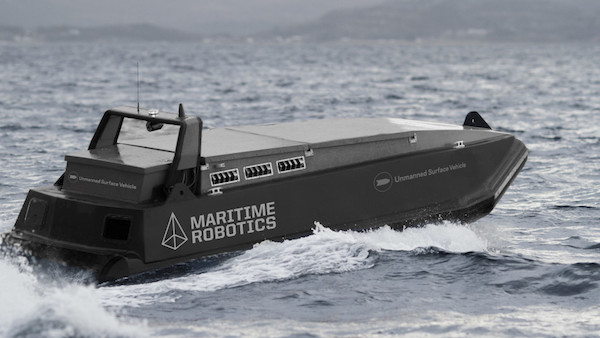Autonomous technology is spreading across numerous applications at an unprecedented pace. Amongst others, the DARPA Grand Challenge for autonomous ground vehicles has given an indication of what is possible to achieve using state-of-the-art sensors in combination with cleverly designed autonomous algorithms. We believe the increasing use of autonomy in vehicle systems eventually will propagate to the maritime industry and that we will see an increasing level of autonomy on ships in order to increase safety, and to reduce operational costs, emissions and impacts from human-induced errors.
An important enabling technology for autonomy at sea is collision avoidance (COLAV). The branching course MPC (BC-MPC) algorithm is a newly designed algorithm for autonomous surface vehicle (ASV) COLAV. The algorithm is designed to avoid collisions with moving obstacles while respecting dynamic constraints of the vessel. The BC-MPC algorithm was experimentally validated in closed-loop COLAV experiments in the Trondheimsfjord during the autumn of 2017, providing very promising results: Videos from the experiments.
This combined project and master thesis will focus on further development and verification the BC-MPC algorithm, which will serve as the foundation of a more complex COLAV system.
As mentioned, this proposal is intended as a combined project and master thesis.
 |
 |
|
|---|---|---|
| USV Mariner, an unmanned surface vehicle | MR Telemetron, a dual-use surface vessel |
Proposed Tasks
For the project assignment, the following tasks are proposed:
- Do a literature review on COLAV algorithms relevant for ASVs.
- Get familiar with the BC-MPC algorithm.
- Investigate possible ideas for further development of the algorithm. For instance including static obstacles, such as land, islands, navigational aids etc.
- Develop a well-suited simulation framework and perform extensive simulations to evaluate the algorithm performance.
The formulation of the master thesis will depend on the results from the project assignment, and will be defined at the end of the autumn. Depending on the results, full-scale tests in the Trondheimsfjord may be part of the master thesis.
Autosea
The candidate will be associated with the AUTOSEA project, which is a collaborative research project between NTNU, DNV GL, Kongsberg Maritime and Maritime Robotics, focused on achieving world-leading competence and knowledge in the design and verification of methods and systems for sensor fusion and COLAV for ASVs. The project has access to supervision and physical test platforms through our industry partners.
Supervisors
Main supervisor: Morten Breivik.
Co-supervisors: Bjørn-Olav H. Eriksen